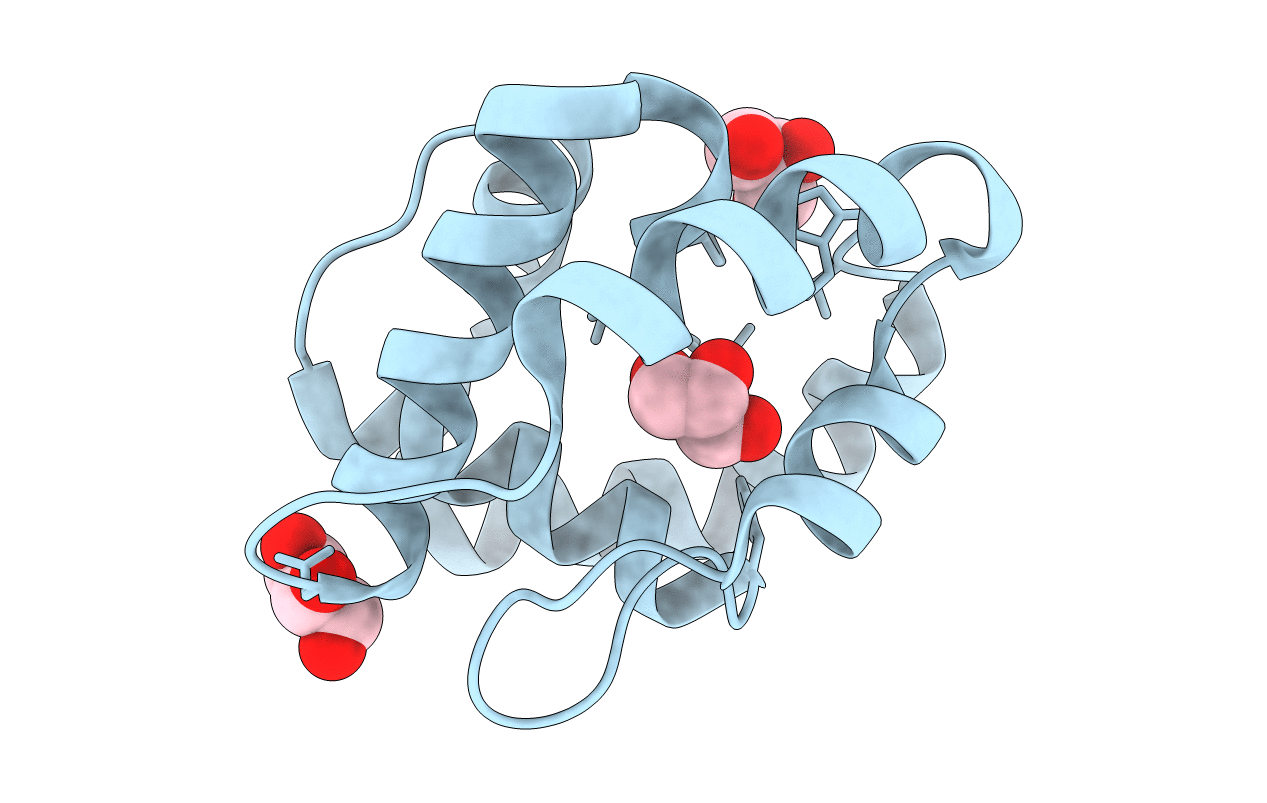
Deposition Date
2008-02-27
Release Date
2008-06-10
Last Version Date
2024-10-30
Entry Detail
PDB ID:
3CDN
Keywords:
Title:
Crystal structure of a pheromone binding protein from Apis mellifera soaked at pH 4.0
Biological Source:
Source Organism:
Apis mellifera (Taxon ID: 7460)
Host Organism:
Method Details:
Experimental Method:
Resolution:
2.00 Å
R-Value Free:
0.20
R-Value Work:
0.17
R-Value Observed:
0.17
Space Group:
C 2 2 21


